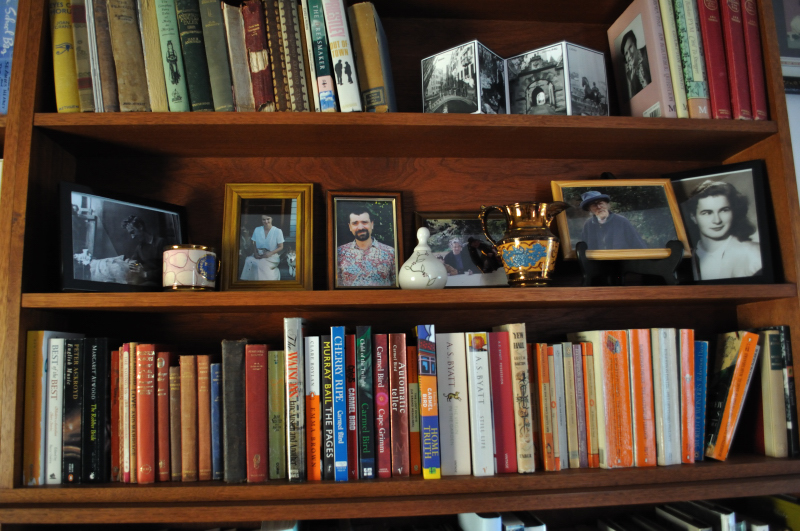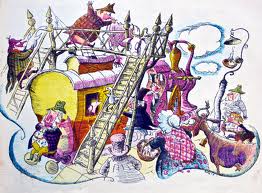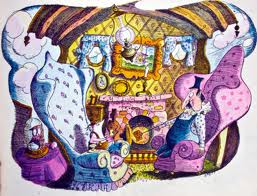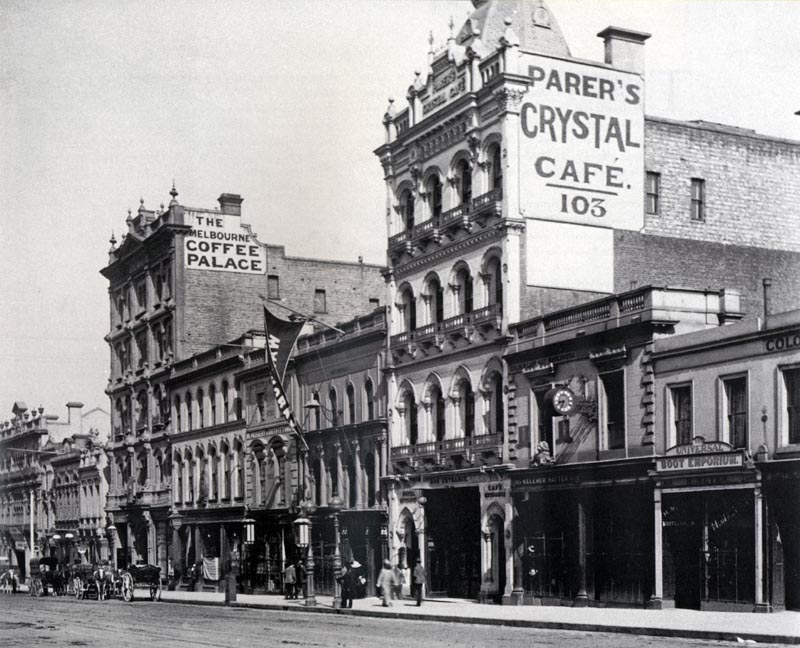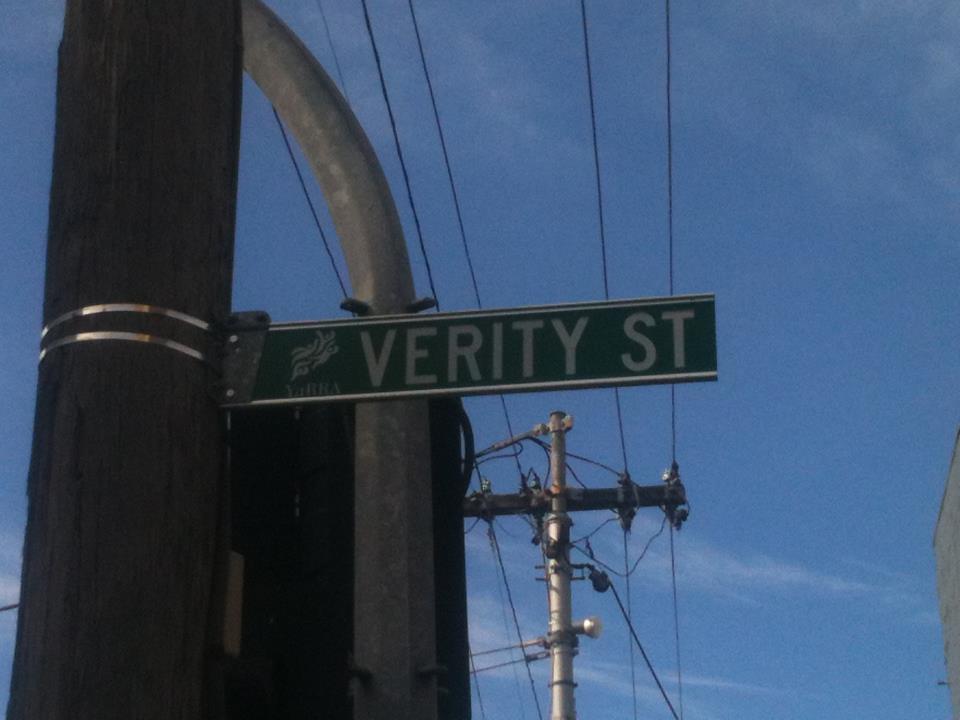Here’s the talk I gave at M.A.D.E as part of the Melbourne Writer’s Festival on Sunday.
My Verity books are junior novels aimed at readers –who seem to be mainly girls – of around 10 to 12 or 13. They’re tales of mystery and suspense, with a little of the supernatural thrown in, set in London, Melbourne and regional Victoria in the late 1870s. The first book was written quite quickly. If I say easily, I might be punished with eternal writers’ block– but I saw it as a bit of a romp. So you might wonder why – as a self-confessed author of escapist fiction – I’m here today.
Well…one of the things that happens when you publish a book is that people tell you what it’s about. And it seemed that without really knowing it, in my first Verity story I’d highlighted many rather weighty issues. Social class, power, the position of women and girls and particularly – this is a phrase used by one of the CBCA judges, and I love her for it – the transformative power of education.
I say ‘without really knowing it’ but the truth is, whether you are writing for children or adults, literary or genre fiction, your opinions and prejudices and beliefs and ideals can’t help but creep into your work. If think back to my initial inspiration for The Truth About Verity Sparks, it becomes very clear to me that, as well as an obsession with an insanely complex plot, my ideas about social justice are part of the story.
That initial inspiration came when I was walking around Melbourne, strolling up Collins Street into East Melbourne. I was looking up at the grand Victorian buildings, made of marble and stone, with architectural references to the glorious Greek and Roman past. There are many like them here in Ballarat, also a rich and important Victorian-era city. These buildings speak emphatically of power. They were meant to impress. Who but the wealthy and powerful would not feel intimidated when entering between those columns and pillars, through massive doorways, into great marble halls? Well, now we live in more democratic times, and they don’t scare me! However I began to wonder what it would have been like, back when these buildings were new, to have been little, young, poor and powerless, scurrying along in the shadow of all this bullying grandeur. And almost instantly, Verity Sparks came into being.
I had a character, but she needed a background, a situation…so I started to do a little research. I love research. Not that I’m fanatical about being factually correct – I reserve the author’s right to simply “make stuff up” – but I’ve always found history, particularly social history, fascinating. My reading led me to make my 13-year-old Verity a milliner’s apprentice. Making hats was one of the limited range of jobs available to young girls of that era. At 12 or 13, she could be working full-time, 6 days a week, from 7.00 in the morning until 6 or 7 at night. She got Sunday off. She was poorly paid, and if she lived in, board and lodging was taken out of her wage. There was no minimum wage, no awards or conditions. In fact, milliners – like dressmakers, maids and shopgirls – were a vulnerable group, being young, inadequately paid and usually living away from the care and protection of home. They were traditionally regarded by some wealthier men as legitimate prey. However this book is for younger readers so I don’t delve into the army of professional and amateur prostitutes in London at that time. But still, when Verity loses her job and thus her home, and is denied refuge by her horrible uncle, she knows full well the abyss that yawns before her. But I wasn’t writing a tragedy. Verity has many adventures and challenges, but all ends happily.
In one of my past incarnations during the late 1980s and early 1990s I was a writer of teenage romances. I’ve had some funny reactions to – some people seem to think it’s a shameful admission. I don’t. And at the time, I took the job quite seriously, and made sure that my romances always included characters who were good role models for their readers. I’m a bit of a believer in role models. Not unrealistically flawless people, but characters worth admiring and even learning from. I’m especially proud of Verity. She is brave, clever and sensible. There is no angst, she doesn’t obsess about her appearance or her love-life, and she is very sure that she is a worthwhile person. Indeed, one editor who declined the manuscript commented that it was unlikely a girl in Verity’s position, would have been so forthright and sure of herself. That’s quite true. But while Verity’s self-confidence is perhaps an anachronism, I have a range of female characters in historically accurate roles.
In general, women had little control over their own lives. The villainess, Lady Throttle, has no money of her own to pay for her gambling habit, so she tries to frame Verity. Verity’s aunt is a battered and abused wife with no hope of escaping her situation. Even Madame Louisette, though a successful businesswoman, is at the mercy of the snobbish Lady Throttle.
On the more positive side, Professor Plush and his family, with whom Verity finds a home and a job and a future, are enlightened individuals who see no reason why females shouldn’t be educated, work, or control their own destinies. The Professor’s sister, Mrs Morcom is an eccentric botanical illustrator, rich and famous in her own right. She may also appear unrealistic, but she’s actually modelled on the real-life Victorian artist and adventurer Marianne North.
The Verity Sparks books are not “about” the position of women or social class or any other issue. They’re first and foremost stories. For the thoughtful reader, though, there are many things to think about even in the small details. For example – I’ve taken care to show minor characters, such as the maids, as actual people. In different households, they are variously bossy and influential, or well-cared for in a paternal manner, or exploited and bullied. I did this almost unconsciously, and that’s because of course I’m a person of my times. 130-odd years since that era, we no longer consider “the servants” to be less than fully human. As part of my research, I read a book on domestic history. Apparently many upper-class people were terribly offended by the smell of the servants. Were they really oblivious to the fact that a servant’s day consisted of hard and no doubt sweaty physical labour, which could include lugging cans of hot water upstairs so that their employers could bathe? As the Plush family were considerate employers, I made sure that they had a gas-fired hot-water geyser in the bathroom so the maids didn’t have to carry the bathwater. And Verity was able to have the very first bath of her life.
Cast out of the millinery establishment, and cut loose by her nasty uncle, Verity is rescued by the bohemian Plush family. They recruit her to work in their Confidential Enquiry Agency. Not just because she had her special gift – the ability to find lost things by thinking about them – but because she was so obviously resourceful, observant and intelligent.
This is where education comes in. The Plush family train her mind. She reads. She converses. They take her seriously. They teach her the manners and speech that will enable her to transcend – but not forget – her origins. Even though she’s female and from a lower class, they urge her towards fulfilling her potential.
And that’s a good place to end this talk. With the transformative power of education. And an insanely complicated plot.
 There’s a new bookshop in town – antiquarian and second-hand – called Mount of Alex. Very exciting for the book-hounds of the area. A week ago I called in and asked about Joan Aiken books, because I stupidly gave away or lost all the ones I had bar The Wolves of Willoughby Chase. The owner still had boxes to unpack and said he’d give me a call when he found some more. Lucky me – on Sunday I picked up Black Hearts in Battersea, Nightbirds on Nantucket and The Stolen Lake. I’m not over-the-top about matching sets, but I would have loved to have had Black Hearts with the original Puffin cover (see left) that I had back in the day. Never mind. The story’s the thing.
There’s a new bookshop in town – antiquarian and second-hand – called Mount of Alex. Very exciting for the book-hounds of the area. A week ago I called in and asked about Joan Aiken books, because I stupidly gave away or lost all the ones I had bar The Wolves of Willoughby Chase. The owner still had boxes to unpack and said he’d give me a call when he found some more. Lucky me – on Sunday I picked up Black Hearts in Battersea, Nightbirds on Nantucket and The Stolen Lake. I’m not over-the-top about matching sets, but I would have loved to have had Black Hearts with the original Puffin cover (see left) that I had back in the day. Never mind. The story’s the thing.


